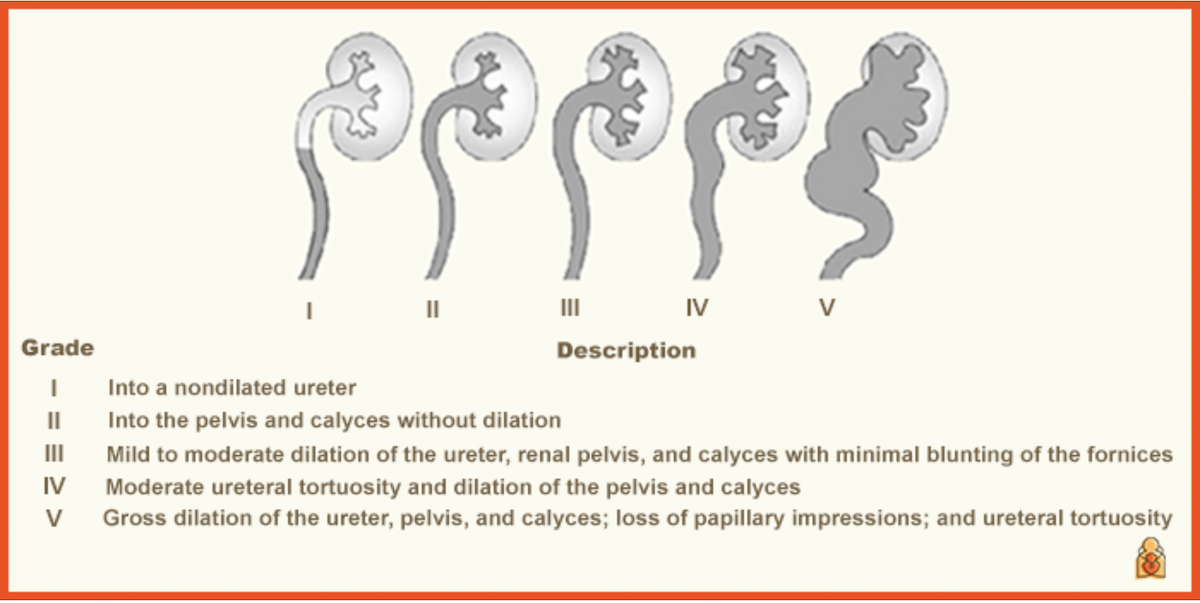Management
Vesicoureteral reflux (VUR)

What is vesicoureteral reflux (VUR)?
causes of VUR in children
Most children who have VUR are born with it. It is congenital and attributed to inheritance or genetic factors.
A child's urinary tract is usually a one-way street. The urine flows down from each kidney through tubes called ureters. The ureters enter the bladder through a tunnel of bladder muscle that creates special one-way valves to prevent urine from going back up into the kidneys.
In VUR, the tunnel in the bladder is short, making the valve "leaky." VUR can also happen if the bladder not emptying normally. Signs and symptoms of VUR
VUR doesn't usually cause symptoms until a child develops a UTI.
UTIs can be in the bladder or the kidney.
Bladder UTI: The symptoms are increased frequency and pain when peeing. These are common and annoying, but bladder infections are usually not harmful in long-term.
Kidney UTI: VUR can increase the risk of a kidney infection, also called pyelonephritis. This is because urine that carries germs can go backwards into the kidney. A kidney UTI can make a child very sick, the child may have high fever, chills and back pain.It leads to scarring of the kidney and later on high blood pressure and reduced kidney function.
VUR may also be suspected if a child has hydronephrosis on a kidney ultrasound.
HOW TO INVESTIGATE VUR
VUR is diagnosed by a test called a voiding cysto-urethrogram (VCUG). A VCUG is usually done if:
- a child has had one UTI with fever and a kidney ultrasound shows a problem.
- an infant or young child under 2 years who has had 2 or more UTIs with fever.
IN VCUG X-rays are taken as the bladder fills up. VUR is diagnosed if the liquid goes the wrong way up a ureter and back into a kidney.
Other tests in VUR?- Ultrasound: primary investigation in UTI.
- Dimercaptosuccinic Acid (DMSA) scan: A DMSA scan can give more detail about whether kidneys have developed scars as a result of kidney UTIs.
- Blood test: Creatinine
- Blood pressure: Blood pressure should be checked at least once a year.
Grading of VUR
VUR is graded between 1 (mild) to 5 (worst). The grade is based on how far the urine backs up and how wide the ureter is. Children who have lower grades of VUR (1-2) found early in childhood have a good chance of outgrowing it within 1 to 5 years.

Treatment for VUR is based-
- On a child's age,
- The grade of their VUR
- Recurrent UTIs.
Observation: Children with lower grades of VUR may be safely watched and followup by imaging tests, urine tested for infection, and fever.
Preventative antibiotics (prophylaxis):
Some children are given a low dose of an antibiotic every day to decrease the risk of developing a UTI while waiting to see if they outgrow the VUR.
Severe VUR (GRADE-IV,V)
Repeated kidney UTIs with fever,
Failed conservative treatment
A child may benefit from surgery that fixes the leaky valve between the bladder and the ureter. Procedures include:
- Ureteral reimplantation: The connection between the ureter and bladder is corrected so that urine flows only in one direction.this can be done by open method or by laparoscopy.
- Endoscopic injection: A substance is injected into the area where the ureter meets the bladder to prevent backward flow of urine.
These procedures are common, generally very safe, and have excellent long-term success.


